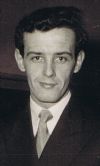|
ESL Forum:
Techniques and methods
in Language Teaching
Games, activities
and teaching ideas
Grammar and
Linguistics
Teaching material
Concerning
worksheets
Concerning
powerpoints
Concerning online
exercises
Make suggestions,
report errors
Ask for help
Message board
|
ESL forum >
Ask for help > proofreading
proofreading
|

jarek2011

|
proofreading
|
|
Can anyone proofread the text below and point to the mistakes that I made?
On Wednesday the 29th, lower-secondary school pupils from the Straumen School set out on a journey to Nordreisa which lies in the vicinity of the Reisa River. The Reisa River takes its origin from Lake R�isj�vri. The river flows from the lake at a distance of about 120km in the north-western direction and flows directly into Reisafjord at Storslett. The name of the river comes from Old Norse �risa� which literally means �a ladder� - probably because the water level in the river can rise suddenly. The Reisa River is also known for being abundant in fish, which attracts many fishing enthusiasts every year. But enough of these fun facts.
Day 1: On Wednesday morning students embarked on a journey from Lenangen/ Lenangsstraumen, and from there we drove to Nordreisa and up Reisadalen to a place called Saraelv. Here the boats were waiting for us and they took us about 20 km up the river. When the boats dropped us off, we had to cover on foot a distance of 3 km before we arrived at Nedrefosshytta � the tourist lodge where we were about to stay. Most of the first trip day was spent on getting to Saraelv, boat ride and walking to the cabin. As the evening drew closer it was high time for cooking. Shortly after, as soon as the students made a bonfire, we were barbecuing and enjoying the evening.
Day 2: The next day we headed up towards the mighty Mollisfossen. In the spring, when the snow melts, the height of the waterfall rises up to 269 meters, which puts the waterfall right on the top in respect to other European waterfalls. On the way up to the valley towards Mollisfossen, the students as well as the teachers were fascinated by the stunning scenery and the steep mountain ridges. The ascent itself took us about two hours, but when we finally arrived at the place and saw the falls we realized that the two hours of climbing really paid off. On the top of the mountain we had lunch, took pictures and enjoyed ourselves. Having seen Mollisfossen we were ready for the descent towards Nedrefosshytta, where we stayed for the night. Once we safely arrived at the cabin, the students took to cooking and woodcutting.
Day 3: After two days in the beautiful scenery of Reisadalen we were ready to head home. We walked for about two kilometers down the river, and finally, we were picked up by the boats there. The boats took us safely down to Saraelv, where we were picked up by a minibus and taken home to Nord Lenangen. |
4 Oct 2012
|
|
|
|

ldthemagicman

|
|
Dear Jarek,
On Wednesday the 29thAugust, 2012, lower-secondary school pupils from the Straumen School set out on a journey to Nordreisa which lies in the vicinity of the Reisa River. The Reisa River has its origin in Lake R�isj�vri. The river flows from the lake for a distance of about 120 km in a north-westerly direction and runs directly into Reisafjord at Storslett. The name of the river comes from Old Norse �risa� which literally means �a ladder� - probably because the water level in the river can rise suddenly. The Reisa River is also known for being abundant in fish, which attracts many fishing enthusiasts every year. But, enough of these fun facts.
Day 1: On Wednesday morning, students embarked on a journey from Lenangen/ Lenangsstraumen, and from there we drove to Nordreisa and up Reisadalen to a place called Saraelv. Here, the boats were waiting for us and they took us about 20 km up the river. When the boats dropped us off, we had to cover a distance of 3 km on foot before we arrived at Nedrefosshytta � the tourist lodge where we were about to stay. Most of the first trip-day was spent on getting to Saraelv, the boat ride and walking to the cabin. As the evening drew closer it was high time for cooking. Shortly after, as soon as the students had made a bonfire, we were barbecuing and enjoying the evening.
Day 2: The next day we headed up towards the mighty Mollisfossen. In the spring, when the snow melts, the height of the waterfall increases to 269 metres, which puts the waterfall right at the top of the table, in relation to other European waterfalls. On the way up the valley towards Mollisfossen, the students as well as the teachers were fascinated by the stunning scenery and the steep mountain ridges. The ascent itself took us about two hours, but when we finally arrived at the chosen place and saw the falls we realized that the two hours of climbing really had paid off. On the top of the mountain we had lunch, took pictures and enjoyed ourselves. Having seen Mollisfossen we were ready for the descent towards Nedrefosshytta, where we stayed for the night. Once we had safely arrived at the cabin, the students took to cooking and woodcutting.
Day 3: After two days in the beautiful scenery of Reisadalen we were ready to head home. We walked for about two km. down to the river, and finally, we were picked up by the boats there. The boats took us safely down to Saraelv, where we were picked up by a minibus and taken home to Nord Lenangen.
I hope that this helps.
Les |
4 Oct 2012
|
|
|

jarek2011

|
|
thank you very much Les! I am most obliged! |
5 Oct 2012
|
|
|